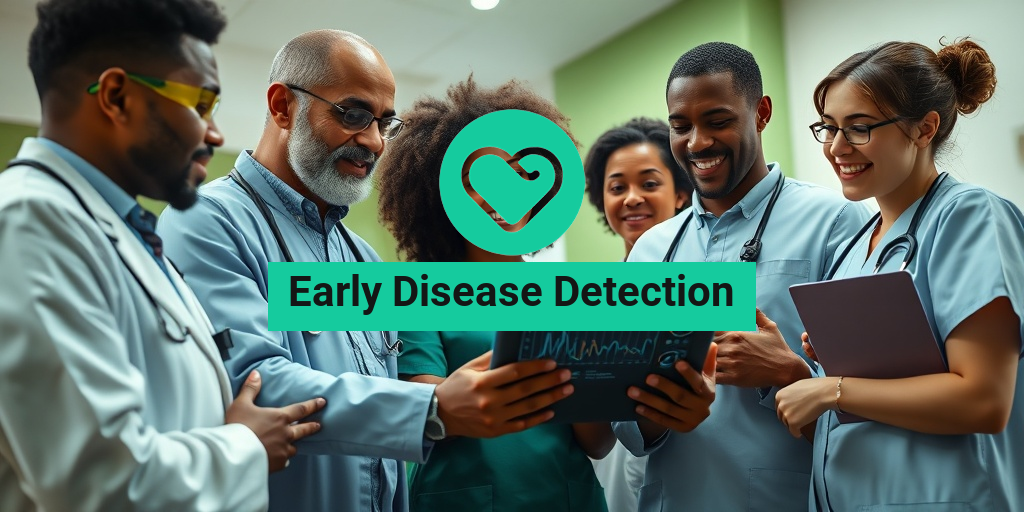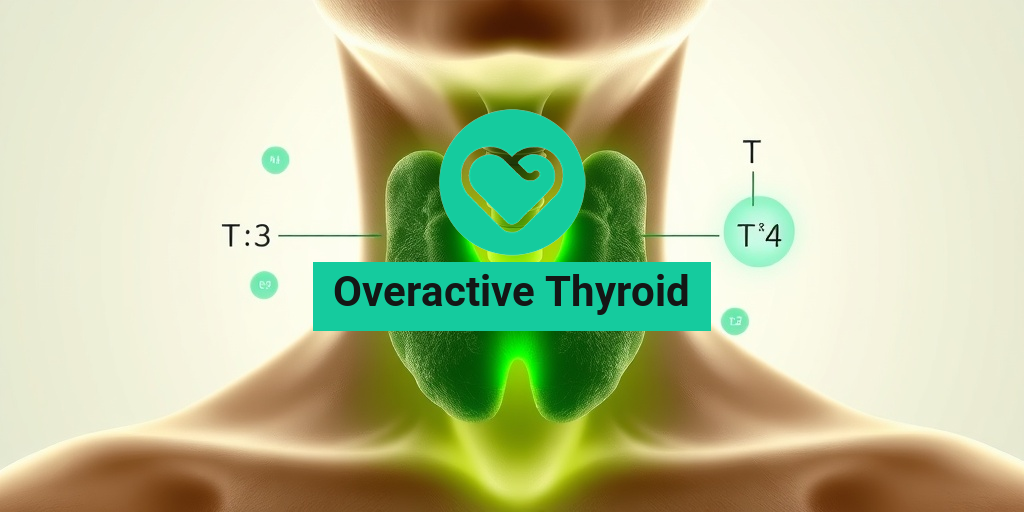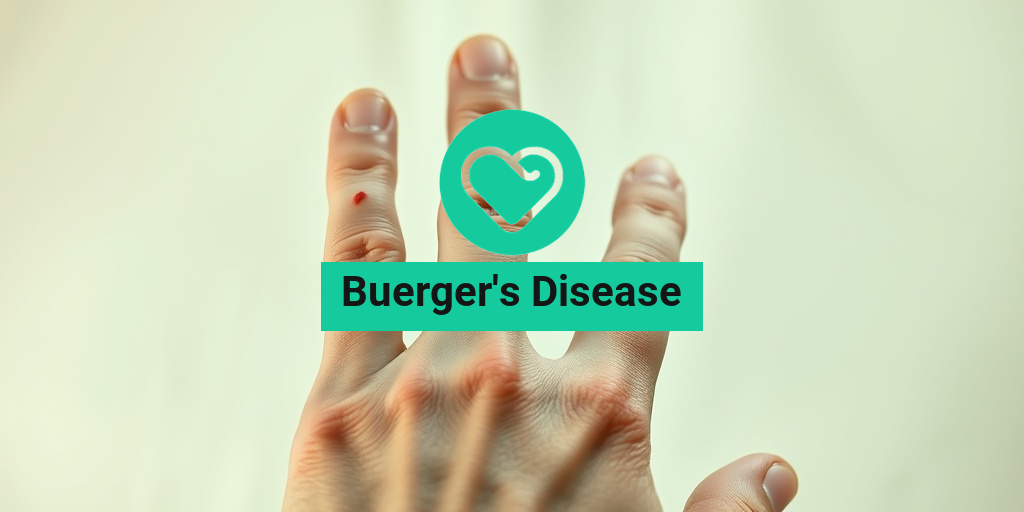What Is Early Disease Detection?
Early disease detection refers to the process of identifying diseases at their initial stages, often before symptoms manifest. This proactive approach is crucial in managing health effectively, as it allows for timely interventions that can significantly improve outcomes. The concept encompasses various methods, including screenings, diagnostic tests, and advanced technologies like artificial intelligence (AI).
The Importance of Early Detection
Detecting diseases early can be a game-changer. For instance, conditions such as cancer, diabetes, and heart disease can often be managed more effectively when caught early. The earlier a disease is identified, the more treatment options are available, and the better the chances of recovery. This is particularly true for chronic diseases, where early intervention can prevent complications and improve quality of life.
Methods of Early Disease Detection
There are several methods used for early disease detection, including:
- Screening Tests: Routine screenings, such as mammograms for breast cancer or colonoscopies for colorectal cancer, are essential for early detection.
- Genetic Testing: For individuals with a family history of certain diseases, genetic testing can identify predispositions to conditions like breast cancer or hereditary heart disease.
- Wearable Technology: Devices like smartwatches can monitor vital signs and alert users to potential health issues.
- AI and Machine Learning: Innovative technologies are being developed to analyze data and predict disease risk, making early detection more efficient.
As technology advances, the methods for early disease detection continue to evolve, offering new hope for patients and healthcare providers alike. For instance, Yesil Health AI is at the forefront of utilizing AI for early disease detection, providing evidence-based health answers that can guide individuals in their health journeys.
Benefits of Early Detection
The benefits of early disease detection are profound and multifaceted. Here are some key advantages:
1. Improved Treatment Outcomes
When diseases are detected early, treatment can begin sooner, often leading to better outcomes. For example, early-stage cancers are generally more treatable and have higher survival rates compared to those diagnosed at later stages. Early detection allows healthcare providers to tailor treatment plans that are more effective for the specific stage of the disease.
2. Reduced Healthcare Costs
Early detection can lead to significant cost savings in healthcare. Treating advanced diseases often requires more extensive and expensive interventions, including surgeries, hospitalizations, and long-term care. By catching diseases early, patients can avoid these high costs and reduce the financial burden on the healthcare system.
3. Enhanced Quality of Life
Identifying diseases early can lead to a better quality of life. Patients who receive timely treatment often experience fewer complications and can maintain a more active lifestyle. This proactive approach not only benefits physical health but also supports mental and emotional well-being.
4. Empowerment Through Knowledge
Early disease detection empowers individuals to take charge of their health. Knowing their health status allows people to make informed decisions about lifestyle changes, treatment options, and preventive measures. This knowledge can foster a sense of control and encourage proactive health management.
5. Contribution to Public Health
On a broader scale, early disease detection contributes to public health by reducing the spread of infectious diseases and minimizing the burden on healthcare systems. When diseases are identified and treated early, it helps prevent outbreaks and protects vulnerable populations.
In conclusion, early disease detection is a vital component of modern healthcare that offers numerous benefits, from improved treatment outcomes to enhanced quality of life. As technology continues to advance, the methods for early detection will only become more effective, making it essential for individuals to stay informed and proactive about their health. For more information on how to leverage technology for early disease detection, consider exploring resources like Yesil Health AI for evidence-based insights. 🌟

Common Diseases Detected Early
Early disease detection is crucial for improving health outcomes and increasing the chances of successful treatment. By identifying diseases in their initial stages, healthcare providers can implement interventions that may prevent progression and enhance quality of life. Here are some common diseases that can be detected early:
Cancer
Cancer is one of the leading causes of death worldwide, but early detection can significantly improve survival rates. Various screening tests are available depending on the type of cancer:
- Breast Cancer: Mammograms are recommended for women starting at age 40 or earlier for those with a family history.
- Colorectal Cancer: Colonoscopies are advised for individuals over 45, allowing for the detection of polyps before they become cancerous.
- Cervical Cancer: Pap smears and HPV tests can identify precancerous changes in cervical cells.
Cardiovascular Diseases
Heart disease remains a leading cause of death, but early detection can lead to effective management. Regular screenings can help identify risk factors:
- Blood Pressure Checks: High blood pressure is a significant risk factor for heart disease.
- Cholesterol Tests: Monitoring cholesterol levels can help assess heart disease risk.
- Electrocardiograms (ECGs): These tests can detect irregular heart rhythms and other heart conditions.
Diabetes
Early detection of diabetes is vital for preventing complications. Screening tests include:
- Fasting Blood Sugar Test: Measures blood sugar levels after fasting for at least eight hours.
- Hemoglobin A1c Test: Provides an average blood sugar level over the past two to three months.
Chronic Respiratory Diseases
Conditions like asthma and chronic obstructive pulmonary disease (COPD) can be managed more effectively when detected early. Key indicators include:
- Pulmonary Function Tests: Assess lung function and help diagnose respiratory conditions.
- Chest X-rays: Can reveal abnormalities in the lungs.
Alzheimer’s Disease
Early detection of Alzheimer’s can lead to better management of symptoms. Researchers are exploring innovative methods, such as:
- At-Home Smell Tests: Recent studies suggest that olfactory tests may help identify early signs of Alzheimer’s disease.
- Cognitive Assessments: Regular cognitive testing can help track changes in memory and thinking skills.
Screening Tests and Procedures
Screening tests and procedures play a pivotal role in early disease detection. They are designed to identify diseases before symptoms appear, allowing for timely intervention. Here’s a closer look at some of the most effective screening tests:
Blood Tests
Blood tests are among the most common screening methods. They can provide valuable information about various health conditions:
- Complete Blood Count (CBC): Helps detect anemia, infections, and other disorders.
- Blood Glucose Test: Used to screen for diabetes and monitor blood sugar levels.
- Lipid Panel: Measures cholesterol levels to assess heart disease risk.
Imaging Tests
Imaging tests are essential for visualizing internal structures and identifying abnormalities:
- X-rays: Useful for detecting bone fractures and certain lung conditions.
- Ultrasound: Often used to examine organs and detect issues in soft tissues.
- CT Scans and MRIs: Provide detailed images of the body and can identify tumors or other abnormalities.
Genetic Testing
Genetic testing can identify individuals at risk for certain hereditary diseases:
- BRCA Testing: Assesses the risk of breast and ovarian cancer.
- Carrier Screening: Determines if an individual carries genes for certain genetic disorders.
Physical Examinations
Regular physical exams are crucial for early disease detection. Healthcare providers can:
- Perform Routine Check-ups: Assess overall health and identify potential issues.
- Conduct Specialized Exams: Such as prostate exams for men or pelvic exams for women.
Incorporating these screening tests into your healthcare routine can lead to early disease detection, ultimately improving health outcomes and quality of life. Remember, proactive health management is key! 🩺✨
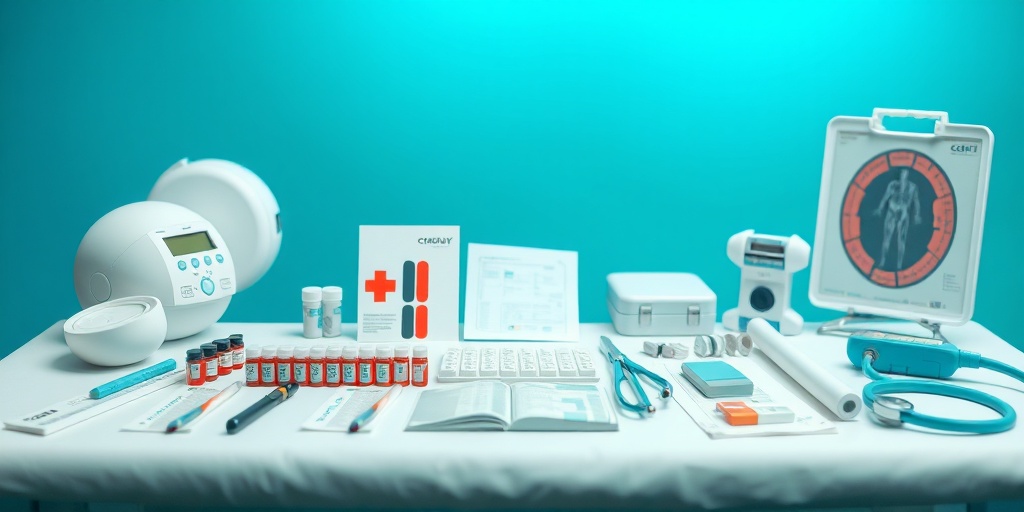
Risk Factors for Delayed Detection
Early disease detection is crucial for effective treatment and improved patient outcomes. However, several risk factors can contribute to delayed detection of diseases. Understanding these factors can help individuals and healthcare providers take proactive measures to ensure timely diagnosis.
1. Lack of Awareness
Many individuals are unaware of the symptoms associated with certain diseases. This lack of awareness can lead to a delay in seeking medical attention. For instance, symptoms of conditions like diabetes or hypertension may be subtle and easily dismissed. Education and awareness campaigns are essential to help people recognize early signs of illness.
2. Socioeconomic Factors
Socioeconomic status plays a significant role in health outcomes. Individuals from lower socioeconomic backgrounds may have limited access to healthcare services, leading to delayed diagnoses. Factors such as insurance coverage, transportation issues, and financial constraints can hinder timely medical visits.
3. Cultural Beliefs and Stigma
Cultural beliefs and stigma surrounding certain diseases can also contribute to delayed detection. In some communities, there may be a reluctance to seek help for mental health issues or sexually transmitted infections due to fear of judgment. Addressing these cultural barriers is vital for encouraging individuals to seek early diagnosis.
4. Healthcare System Challenges
The healthcare system itself can present challenges that lead to delayed detection. Long wait times for appointments, inadequate staffing, and limited availability of diagnostic tests can all contribute to delays. Streamlining healthcare processes and improving access to diagnostic services are essential steps in addressing these challenges.
5. Comorbid Conditions
Individuals with multiple health conditions may experience delayed detection of new diseases. For example, a patient with chronic illness may attribute new symptoms to their existing condition, leading to a lack of further investigation. Regular check-ups and comprehensive assessments are crucial for identifying new health issues in patients with comorbidities.
Role of Technology in Detection
Technology is revolutionizing the field of early disease detection, making it more efficient and accessible than ever before. From artificial intelligence (AI) to telemedicine, various technological advancements are playing a pivotal role in identifying diseases at their earliest stages.
1. Artificial Intelligence and Machine Learning
AI and machine learning are transforming early disease detection by analyzing vast amounts of data to identify patterns that may indicate the presence of disease. For instance, AI algorithms can analyze medical imaging, such as X-rays and MRIs, to detect abnormalities that may be missed by the human eye. This technology not only enhances accuracy but also speeds up the diagnostic process, allowing for earlier intervention.
2. Wearable Health Devices
Wearable health devices, such as smartwatches and fitness trackers, are becoming increasingly popular for monitoring health metrics. These devices can track vital signs, activity levels, and even sleep patterns, providing valuable data that can help in the early detection of health issues. For example, irregular heart rates detected by a smartwatch can prompt users to seek medical advice sooner, potentially preventing serious conditions like heart disease. ⌚❤️
3. Telemedicine
Telemedicine has gained significant traction, especially in recent years. It allows patients to consult healthcare providers remotely, making it easier to seek medical advice without the barriers of travel or long wait times. This accessibility can lead to earlier detection of diseases, as patients are more likely to reach out for help when it’s convenient for them. Virtual consultations can facilitate timely assessments and referrals for further testing when necessary.
4. Genetic Testing and Biomarkers
Advancements in genetic testing and biomarker research are paving the way for personalized medicine. These technologies can identify individuals at higher risk for certain diseases, allowing for proactive monitoring and early intervention. For example, genetic tests can reveal predispositions to cancers, prompting earlier screening and preventive measures. 🧬
5. Mobile Health Applications
Mobile health applications are empowering individuals to take charge of their health. These apps can remind users to schedule regular check-ups, track symptoms, and even provide educational resources about disease prevention. By encouraging proactive health management, these applications play a crucial role in early disease detection.
In conclusion, understanding the risk factors for delayed detection and leveraging technology can significantly enhance early disease detection efforts. By addressing these challenges and embracing innovative solutions, we can improve health outcomes and save lives.
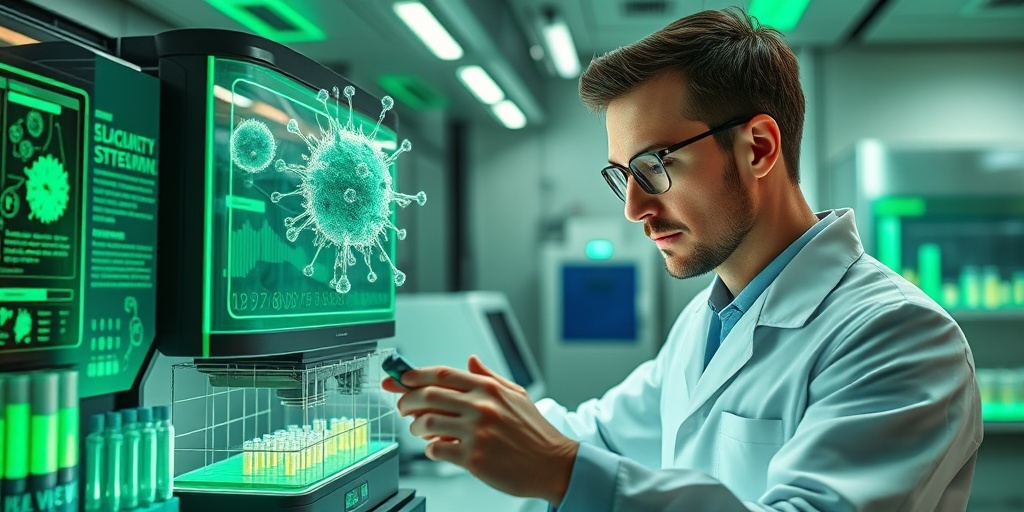
Patient Education and Awareness
In the realm of early disease detection, patient education and awareness play a pivotal role. Understanding the importance of early detection can significantly impact health outcomes, leading to timely interventions and improved quality of life. Here, we explore how educating patients can empower them to take charge of their health.
The Importance of Patient Education
Patient education involves providing individuals with the knowledge they need to make informed decisions about their health. This includes understanding the signs and symptoms of diseases, the benefits of early detection, and the various screening options available. When patients are well-informed, they are more likely to:
- Recognize Symptoms Early: Knowledge about potential warning signs can lead to quicker medical consultations.
- Engage in Preventive Care: Understanding the importance of regular screenings can encourage patients to participate in preventive health measures.
- Make Informed Choices: Patients who are educated about their health conditions can make better decisions regarding treatment options.
Strategies for Enhancing Awareness
To effectively enhance patient education and awareness, healthcare providers can implement several strategies:
- Workshops and Seminars: Hosting community events focused on disease awareness can help disseminate crucial information.
- Digital Resources: Utilizing websites, social media, and mobile apps to share information about early disease detection can reach a broader audience.
- Personalized Education: Tailoring educational materials to meet the specific needs of different patient demographics can improve understanding and retention.
Utilizing Technology for Education
With the rise of technology, there are innovative ways to educate patients about early illness detection. For instance, telehealth platforms can provide virtual consultations where patients can learn about their health risks and the importance of early detection. Additionally, AI-driven tools are emerging that can analyze patient data and provide personalized health insights, making education more accessible and relevant.
Future Trends in Disease Detection
The landscape of early disease detection is rapidly evolving, driven by advancements in technology and research. As we look to the future, several trends are emerging that promise to enhance our ability to detect diseases at their earliest stages.
Artificial Intelligence and Machine Learning
One of the most exciting developments in disease detection is the integration of AI and machine learning. These technologies can analyze vast amounts of data to identify patterns that may indicate the onset of diseases. For example:
- Predictive Analytics: AI algorithms can predict the likelihood of developing certain conditions based on genetic, lifestyle, and environmental factors.
- Image Recognition: Machine learning can improve the accuracy of diagnostic imaging, helping radiologists detect abnormalities earlier.
Wearable Technology
Wearable devices are becoming increasingly sophisticated, allowing for continuous monitoring of health metrics. These devices can track vital signs, physical activity, and even sleep patterns, providing valuable data that can lead to early detection of potential health issues. For instance, smartwatches can alert users to irregular heart rhythms, prompting them to seek medical advice sooner.
At-Home Testing Kits
The convenience of at-home testing kits is revolutionizing how we approach early illness detection. These kits allow individuals to conduct tests for various conditions from the comfort of their homes. Recent innovations include:
- Genetic Testing: At-home kits can analyze genetic predispositions to certain diseases, enabling proactive health management.
- Biomarker Detection: New tests are being developed to detect biomarkers associated with diseases like Alzheimer’s, allowing for earlier intervention.
Integration of Data and Personalized Medicine
As healthcare moves towards a more personalized approach, the integration of patient data from various sources will become crucial. This includes data from electronic health records, genetic testing, and lifestyle tracking. By analyzing this comprehensive data, healthcare providers can tailor screening and prevention strategies to individual patients, enhancing the effectiveness of early disease detection systems.
In conclusion, the future of disease detection is bright, with technology paving the way for earlier and more accurate diagnoses. By focusing on patient education and embracing innovative trends, we can significantly improve health outcomes and empower individuals to take control of their health journeys. 🌟

Frequently Asked Questions about Early Disease Detection
What is Early Disease Detection?
Early disease detection refers to the identification of diseases at an initial stage, often before symptoms appear. This proactive approach can significantly improve treatment outcomes and increase the chances of recovery.
How does AI contribute to Early Disease Detection?
Artificial Intelligence (AI) plays a crucial role in early disease detection by analyzing vast amounts of data to identify patterns and anomalies that may indicate the presence of a disease. This technology can enhance diagnostic accuracy and speed.
What are some examples of Early Disease Detection systems?
- At-home tests: Devices that allow individuals to perform tests in the comfort of their homes, such as smell tests for Alzheimer’s disease.
- Wearable technology: Gadgets like smartwatches that monitor vital signs and alert users to potential health issues.
- Mobile applications: Apps designed to track symptoms and provide insights into health conditions.
Why is Early Disease Detection important?
Detecting diseases early can lead to:
- Better treatment options: Early intervention often results in more effective treatments.
- Cost savings: Treating diseases in their early stages can reduce healthcare costs.
- Improved quality of life: Early detection can lead to better health outcomes and a longer, healthier life.
What are some challenges in Early Disease Detection?
Some challenges include:
- Access to technology: Not everyone has access to advanced diagnostic tools.
- Awareness: Many individuals may not be aware of the importance of early detection.
- Data privacy: Concerns about how personal health data is used and shared.
How can I participate in Early Disease Detection research?
Individuals interested in contributing to early disease detection research can:
- Join clinical trials or studies in their area.
- Participate in community health initiatives.
- Stay informed about new research projects and opportunities.
Are there specific diseases that benefit from Early Disease Detection?
Yes, several diseases benefit significantly from early detection, including:
- Cancer: Early diagnosis can lead to more effective treatment options.
- Cardiovascular diseases: Identifying risk factors early can prevent serious complications.
- Diabetes: Early detection can help manage the condition and prevent complications.
What role do plants play in Early Disease Detection?
In agriculture, early disease detection in plants is crucial for maintaining crop health. Technologies such as deep learning and remote sensing are being developed to identify plant diseases early, ensuring better yields and food security.
How can I learn more about Early Disease Detection?
To stay informed about early disease detection, consider:
- Following health organizations and research institutions.
- Reading scientific journals and articles.
- Attending health seminars and workshops.
Can lifestyle changes improve Early Disease Detection?
Yes, adopting a healthy lifestyle can enhance your overall health and make it easier to detect diseases early. Regular check-ups, a balanced diet, and physical activity can all contribute to better health outcomes.

